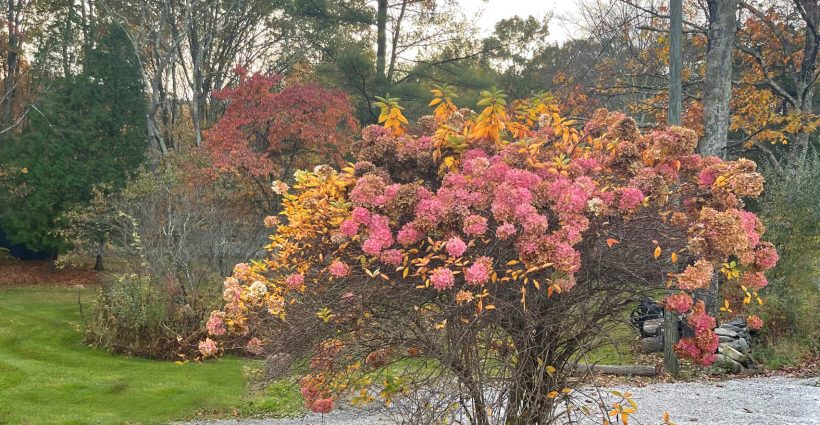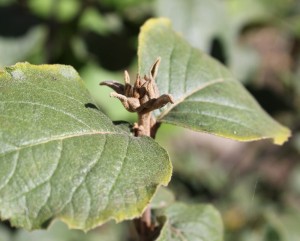designed for the way women work.

Tips On Pruning Shrubs in the Fall
Category: How-To Projects, Plant Ideas & Info, Presenting "The Curious Gardener"
We consulted with our friend, horticulturist Ruth Rogers Clausen, about pruning shrubs in the fall.
There are primarily three reasons to prune a shrub:
- To get rid of any dead, damaged, diseased or dying wood (The 4 D’s), or crossing branches
- To shape an overgrown or lobsided shrub
- To encourage more flowering
Fall is a good time to prune away dead, damaged, diseased or dying branches. This will improve the health of the plant, and it can be done anytime of year. The advantage to doing it in the fall is you don’t have to worry about damaging new growth that may be emerging on healthy branches in the spring. In the spring you might accidentally prune out a live branch before it leafs out.
Fall is also a good time to shape a shrub that has become overgrown or lopsided. You can lightly prune your boxwood now.
However, many shrubs should not be pruned in the fall. Many spring flowering shrubs set their buds the previous year, like Korean Spice (Viburnum carlesii), one of my personal favorites because of its extraordinary fragrance. If buds are removed now the plant will not be harmed, but there will be no flowers next spring, which would be a big disappointment. Other shrubs that fall into this category are forsythia, weigela, lilac, some species of rhododendron and azalea, and other spring bloomers whose flowers grow on ‘old wood’ from the previous year.
Some shrubs, including red-osier dogwood (Cornus stolonifera) and bark willow (Salix alba ‘Britensis’), provide colorful stems through the winter, so leave them alone.

Shrubs that bloom on new shoots that grow in the spring should not be pruned in the fall either, but for different reasons. If you prune now you might weaken or shock the plant, and any new growth that occurs between now and winter could be vulnerable to desiccation from cold winter temperatures and wind. Rose bushes and Buddleia davidii are examples of this. Other shrubs that bloom on ‘new wood’ include caryopteris, spirea, callicarpa and holly.
The popular genus of hydrangea has many species, and some bloom on old wood and some on new wood. According to Proven Winners, hydrangeas account for at least half the pruning questions in gardening advice forums. Some hydrangeas bloom on “old wood” while others bloom on “new wood”. Their advice is the following: “Hydrangea macrophylla and Hydrangea serrata, the ones with big blue or pink flowers, and Hydrangea quercifolia, oakleaf hydrangeas, all bloom on old wood. The little pruning they need should be done immediately after flowering. Hydrangea paniculata, which have white, conical flowers, and Hydrangea arborescens, such as ‘Annabelle’, bloom on new wood. They’ll produce better flowers if cut back in late fall or early spring.”
When pruning, always remember to use a sharp set of pruning shears or scissors and wear a pair of your favorite Womanswork garden gloves!



do you have any advice for pruning a Japanese maple in USDA zone nine?
This is very helpful. Thank you!